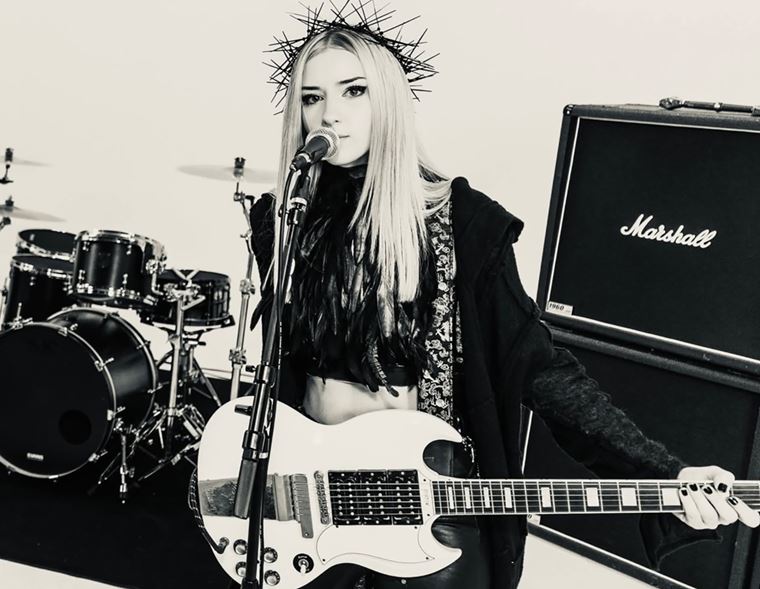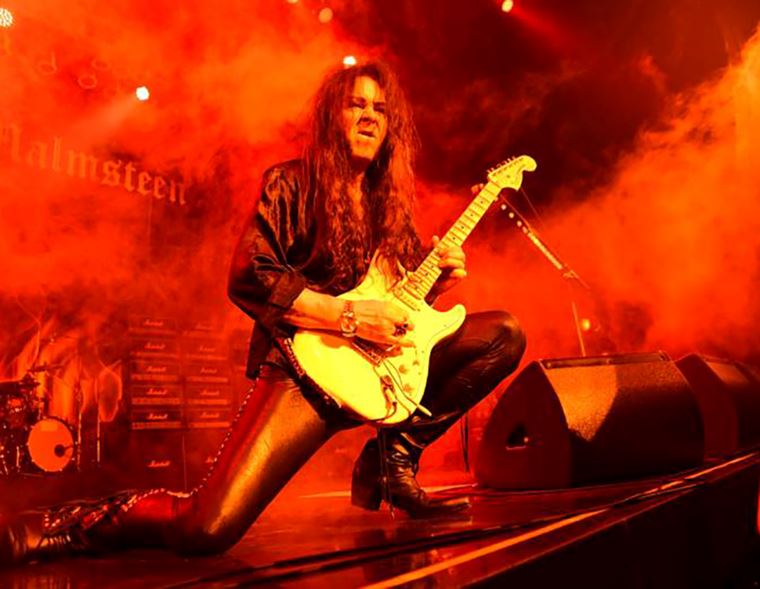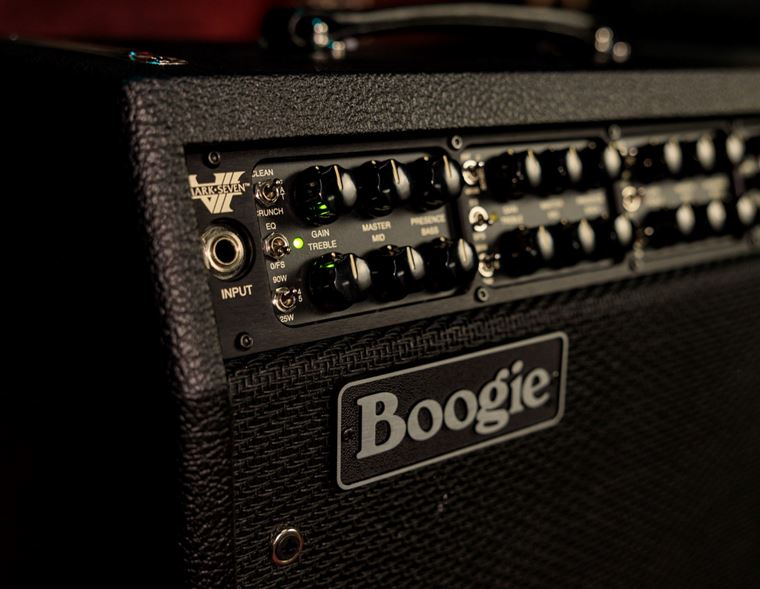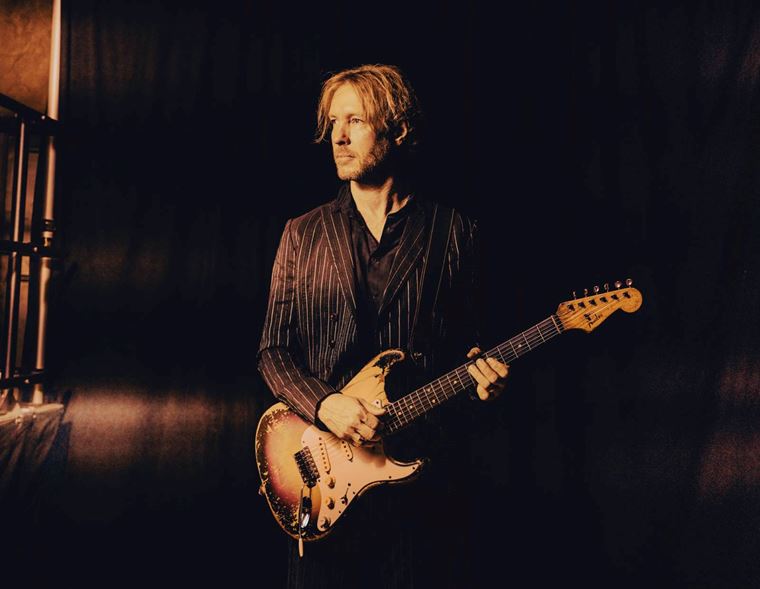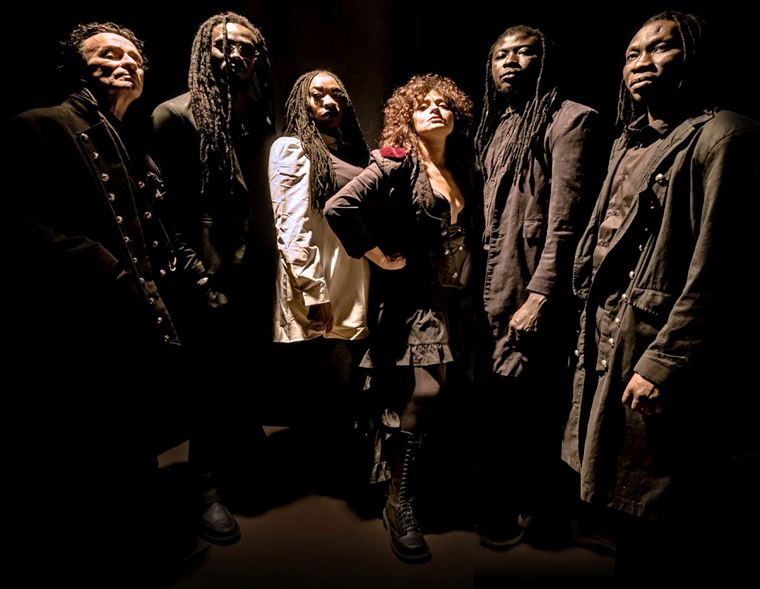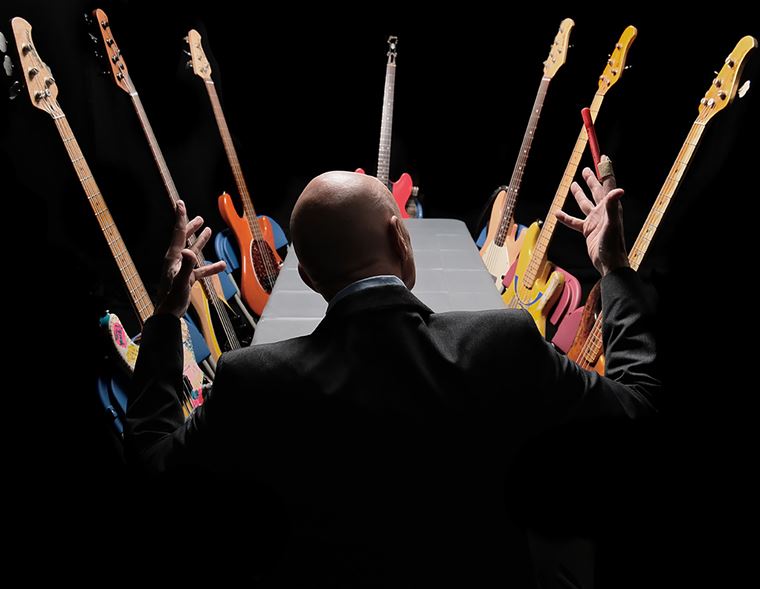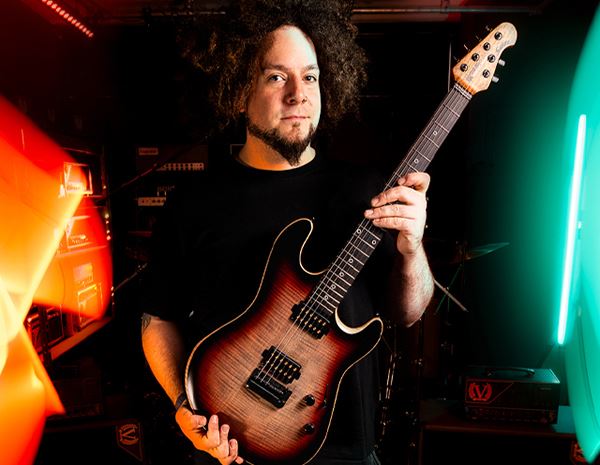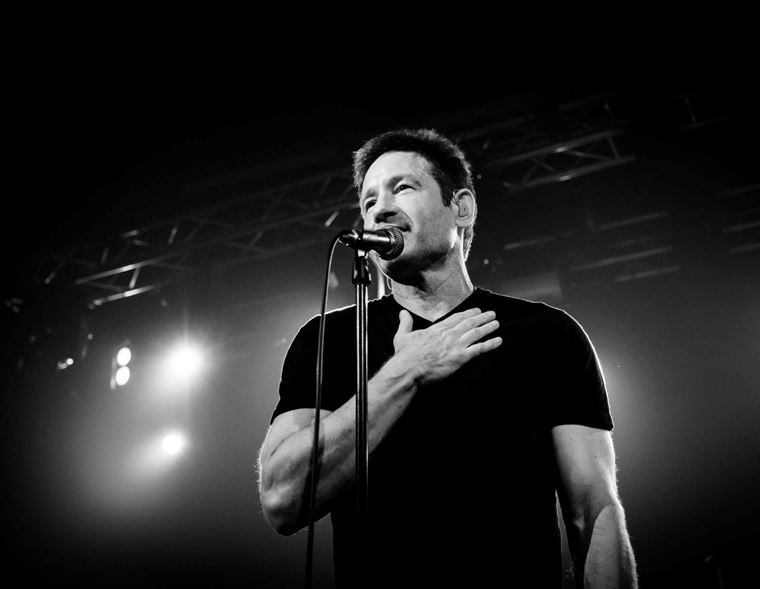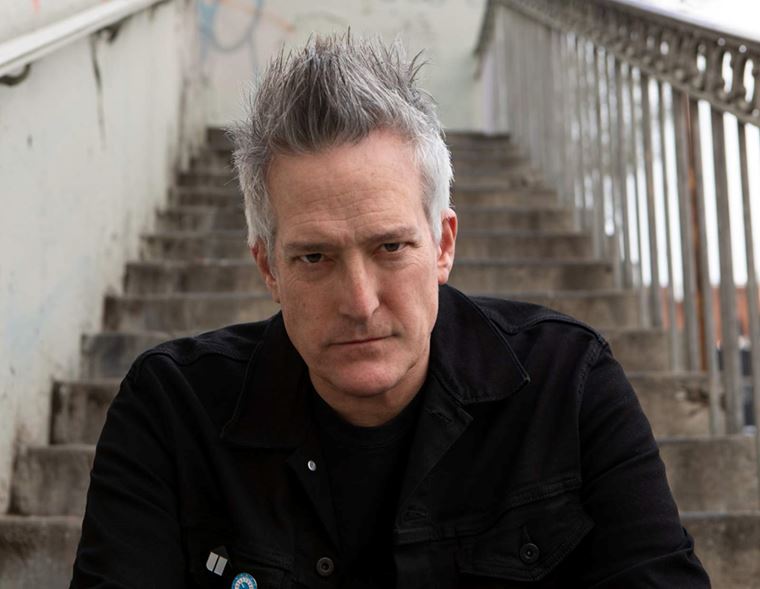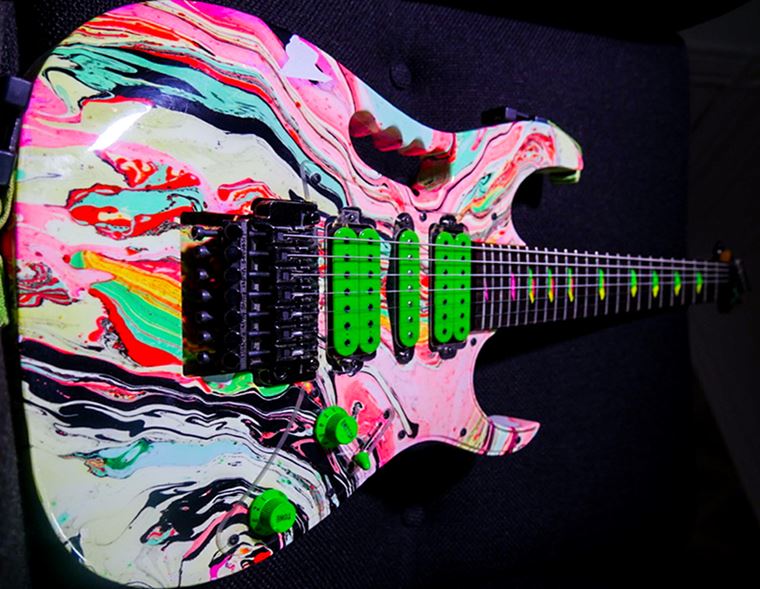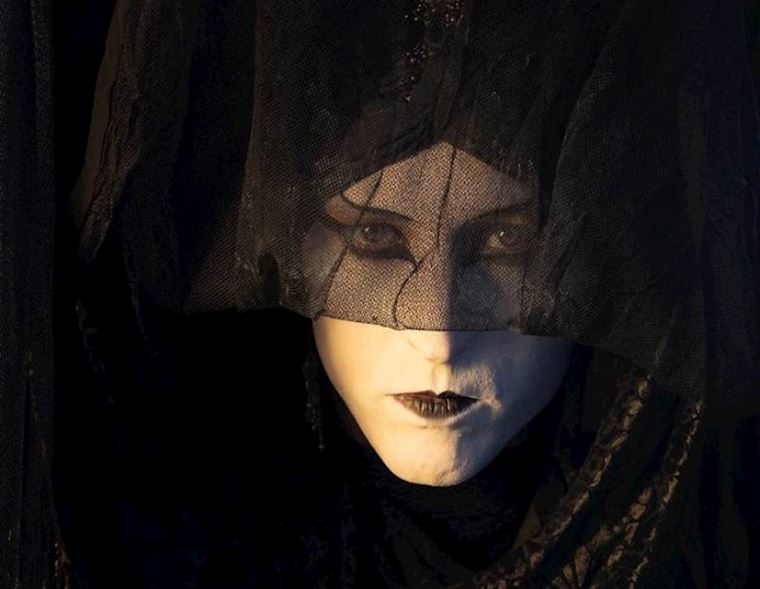Marillion's Steve Rothery on Modded Pedals and Recording in a Castle
Published on 20 September 2019
Marillion are a colourful, magical Progressive Rock band who have been successfully operating on their own terms for 40 years. From their early days with singer Fish to their current iteration with Steve Hogarth (the 'new' singer who has been with them continuously for 30 years!), Marillion have plowed their own path. In the early 80s, they brought Prog to Top of the Pops and wrote seventeen and a half minute songs about Beowulf (which is an AMAZING thing to do!) before parting ways with Fish. Since then, with Hogarth at the mic, they have continued to produce ambitious, accessible Rock music with invention, heart and imagination.
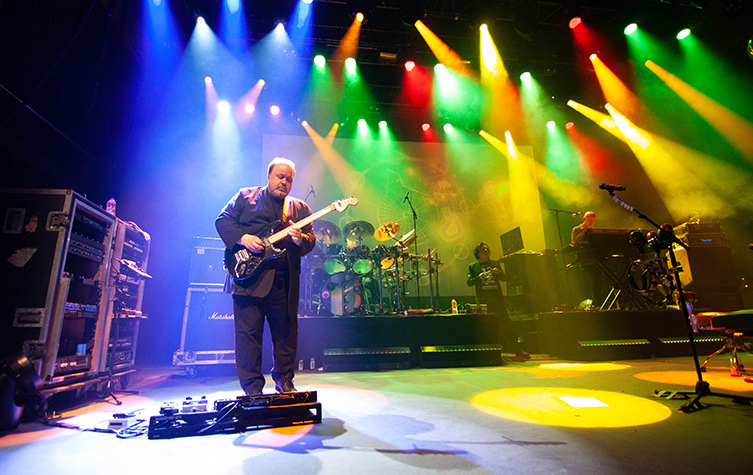
Marillion are one of those bands who seem to operate outside the industry. From their pioneering of crowdfunding 20 years ago, to their fantastic yearly weekend events that see fans coming from all over the world to enjoy all things Marillion, they have managed to bend a cut-throat industry to their way of doing things. There is a lot to be learned from their attitude, not least in their ability to remain fresh as a musical unit decade after decade. Most early 80s bands are essentially trading on past glories, but that's not something that can be reasonably applied to Marillion. You get the impression that they are making music because they simply can't wait to create stuff and share it: it's a beautiful creative space to occupy.
Talking of beauty, guitarist Steve Rothery has, decade after decade, provided guitar fans with some of the most gorgeous, soulful playing to be found anywhere. A lyrical and melodic player, Rothery has a sense of space and drama in his style, twinned up with a sound that is perfect and a touch that is incredibly expressive. He is an underrated player who deserves more recognition and celebration throughout guitar circles. Everyone could learn a thing or two from Steve about what to play, when to play and how to play it!
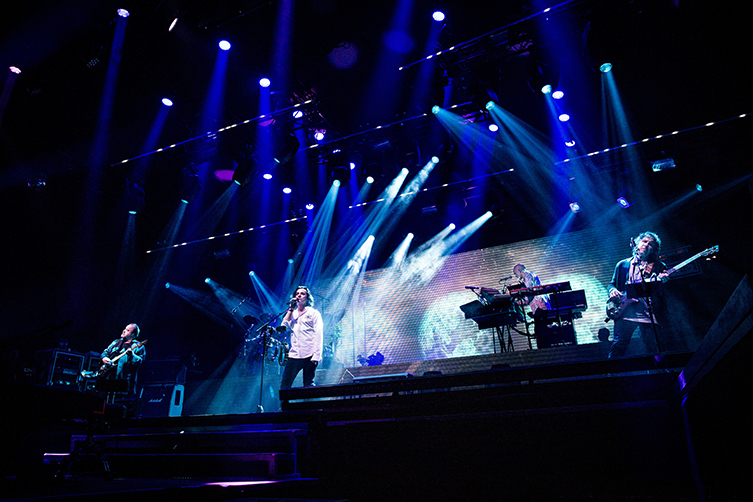
This winter sees Marillion celebrate 40 years together, with Hogarth celebrating his 30 years' service. As befits an important double-anniversary, the band are making it all a little more special by bringing some orchestral musicians along to enhance and deepen the experience. The shows promise to be spectacular, for all fans of beautiful sounding Rock music.
We managed to get Steve on the phone to chat about the upcoming tour and the band's future plans. In the end, we spoke about giant telescopes, lasers, Scottish castles and the merits of both Squier strats and BOSS DS-1 pedals! Refreshingly, he's no gear snob, as we'll see, though he is very specific and meticulous about what he uses. It seems that the sound is the thing for him, as it should be for all musicians, really! We called up Steve one Tuesday morning and found him to be very friendly, polite company. We was happy to share lots of detail about not only his playing and equipment, but also how the band write songs. We had a fantastic chat: here it is in it's entirety...
Guitarguitar: First of all: let’s talk about the new orchestral gigs that are coming up. Marillion have already played in this type of format a couple of times, is that right? The Royal Albert Hall and so on?
Steve Rothery: Yeah, we did a short run of shows, culminating in the Royal Albert Hall, last time we toured, which we filmed. It was a great success, probably the best live thing we’ve ever done, I think. So, yeah, we’re going out again with the (string) quartet and the two wind players.
It’s quite interesting because you kind of look at the older songs with new eyes really, and Mike Hunter, our producer, is also the arranger of the orchestral score, so, you know, it’s quite fascinating to see a different emphasis placed on the songs that you know so well.
GG: Yeah! So, are the orchestral players going to be playing entirely new pieces of instrumentation behind what you’ve got, or do they double up on the keyboards or the guitar parts or anything?
SR: It depends, section by section, track by track, really. It’s kind of... new melodies and accompaniment I suppose, really. Sometimes, there might be a keyboard part with string pads, and we might translate that to the quartet but from moment to moment, it’s whatever works best in the track.
GG: Totally, that sounds awesome. So that’s gonna be, roughly speaking, Marillion’s 40th anniversary, is that right?
SR: Yeah, so this is my 40th anniversary year of first joining Marillion, so I guess yeah, looking backwards, it is the 40th year.
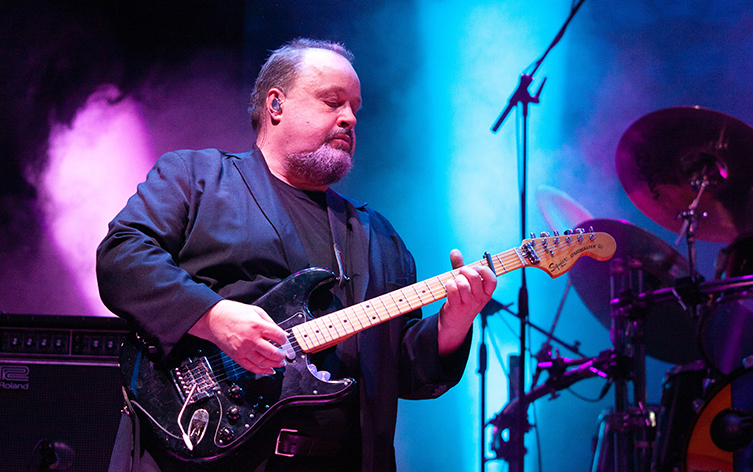
GG: And is that part of the idea with these concerts, to celebrate in style and do a grand version of some of the songs?
SR: Ummm, you always search around for new things to do and we thought that, because the Albert Hall show was such a success, this made sense as a sort of stopgap before our next studio album. We are currently in our studio, the Racket Club, writing tracks for the new album. That’s not gonna be out till probably the beginning of 2021.
GG: Oh wow, so it’s still gonna be a little while off.
SR: Yeah, so this is like a nice stopgap between.
GG: Good, because that was on my list of questions, haha! Your next album! So, it’s also (singer) Steve Hogarth’s 30th Anniversary of joining Marillion, so is the set list going to be tailored toward Hogarth-era tunes?
SR: It’s probably going to be more focussed on that, really. Obviously, we’ve got a lot of albums with Steve to choose from! And y’know, people are expecting to hear Kayleigh and songs of that kind with the string arrangement, but it’s more a celebration of the last 30 years. I’m proud of everything we’ve done: I’ve been here from the beginning but with what the band’s about now, it’s not about looking too far back.
GG: Yes, got you. I know people say it a lot but it’s almost like two different bands in a lot of ways.
SR: I can see that, although, I mean, as a main musical composer in the Fish years, I see the continuation of what I’ve always done.
GG: Of course.
SR: But yeah, you have a different singer and lyricist, you’re gonna get a very different aspect. Some of the music on Season’s End and even Holidays in Eden was written before Fish left the band. They were from some of the latter writing sessions we did up in Dalnaglar castle up in Scotland, the doomed sessions! (laughs) So some of those ideas...and you know Fish used some of them as well.
Just before Fish left, we had an attempt at writing what would’ve been the follow-up to Clutching at Straws at Dalnaglar Castle, up near Inverness I think...anyway it was quite far up there, and the writing just didn’t happen really: we were wanting two very different things.
GG: I understand. So, that’s about 18 albums you’ve done, is that right?
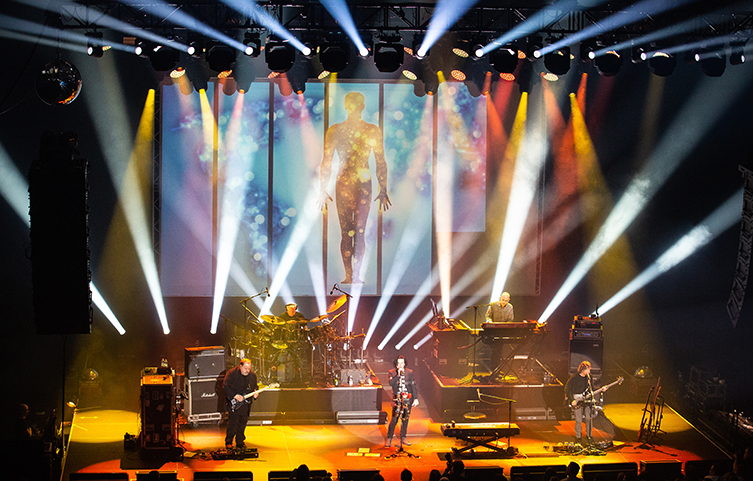
SR: Yeah, probably! Haha! I lost track of them after a while! (laughs) Not enough fingers!
GG: Haha, exactly! I was just wondering: how do you guys even come up with your set list these days?
SR: Well, you kind of look at what you did last time, and there are certain songs that you’re in danger of overplaying, so you try and give them a rest for a while, songs like Easter. But then, with this, it’s sort of like ‘what songs are going to work best in this format?’ So that’s very much what you look towards, something that’s going to work well with the strings.
GG: And you guys have such a diverse range of songs: there’s quite a lot of potential and space throughout the back catalogue to pick a lot out! You could have an entire set that sounds one way and then an entire set that sounds another way, couldn’t you?
SR: Yeah, definitely.
GG: Well, talking about songs and songwriting: earlier you mentioned that Marillion have their own studio, but do you have a home set up for when you’re writing?
SR: Yeah, I’ve got a studio at home, it’s pretty advanced! It’s got, you know, it’s a converted garage so it’s a got a workstation, Pro Tools, keyboards...and more guitar gear than more music shops, probably! (laughs)
So yeah, but these days with Marillion, we’ve kind of settled on a way of working which is all about us jamming ideas together in the room. Obviously, it’s still dependant on someone having an idea to jam around! It’s usually more that than bringing, usually, than bringing developed ideas in.
GG: That’s interesting! So, it’s still about the interaction.
SR: Yeah, it’s very much that, it’s almost a conversation, really, you know? And if you’re all of the same page, that’s one of the times when the magic can happen: some idea is born and then it grows into something magical, you know?
GG: Yeah!
SR: From nothing.
GG: Yeah, that’s amazing. So, I was going to ask of you tended to write on the electric or the acoustic but from what you’ve just said, you tend to work on the electric, right?

(Photo by Lars Mullen)
SR: Yeah, that’s it. On that situation. I mean sometimes, like the intro of the last album (F.E.A.R.), I wrote on the acoustic and brought that to the band, but generally, 99% of the time, it’s electric.
GG: Cool. And on that note, let us talk about guitars! I always really liked your classic black Squiers. Do you still use them and take them out on tour?
SR: Yeah! There’s nothing that sounds quite like them! They’re Japanese vintage ones from the early/mid 80s. There’s EMG SA pickups in them and Kahler trems and they just react so well to the old stuff in my signal chain like the BOSS CE-300 Chorus, and the Analogman DS-1 Distortion into a JC120 which is the basis for most of those albums, really. I only used the Marshalls at the time for kind of power chords and grunge but nearly everything was done with the JC120, which is unusual because it’s a transistor amp. But I’ve found a sound with the DS-1 Distortion, the Strat, the JC-120 and a bit of Delay that just, uh, is a very defined solo sound, very dynamic and its harmonically very rich so it feeds back in a very nice way.
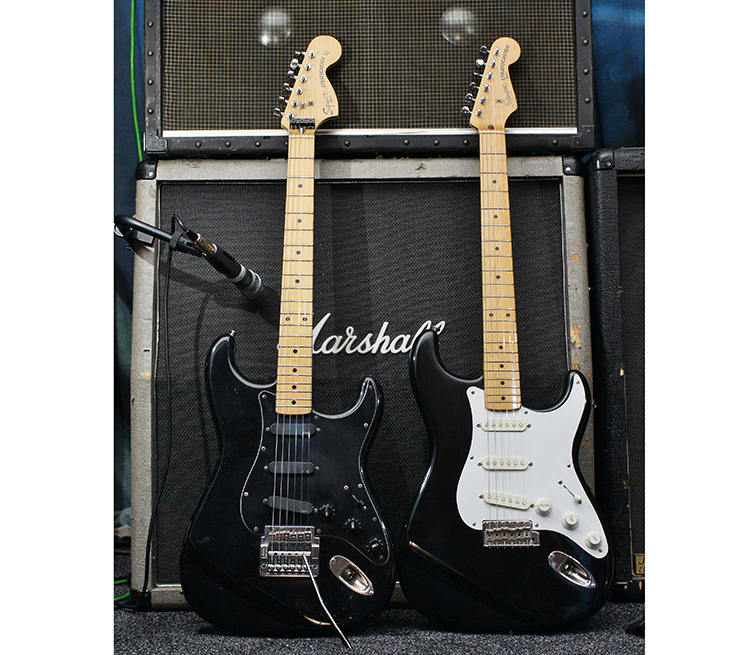
(Photo by Lars Mullen)
GG: So, your lead tones were coming from that setup you just mentioned?
SR: Yeah! All the way through, actually until probably Anaroknophobia in 1999. Occassionally I played around with a few different things: around Anoraknophobia, I got a Groove Tubes Trio and Dual 25 set up that I’d been playing around with and had fully embraced right about ’99 and since then my sound kind of changed a bit. I started using the (Levinson) Blade RH-4 vintage, two singles and a humbucker with a switchable mid-boost and that was like the next chapter of what I was trying to do, sonically. Obviously, we still play the old stuff, so I have two very separate rigs on stage, one of which is dedicated to the JC-120 stuff and one for the more modern valve side.
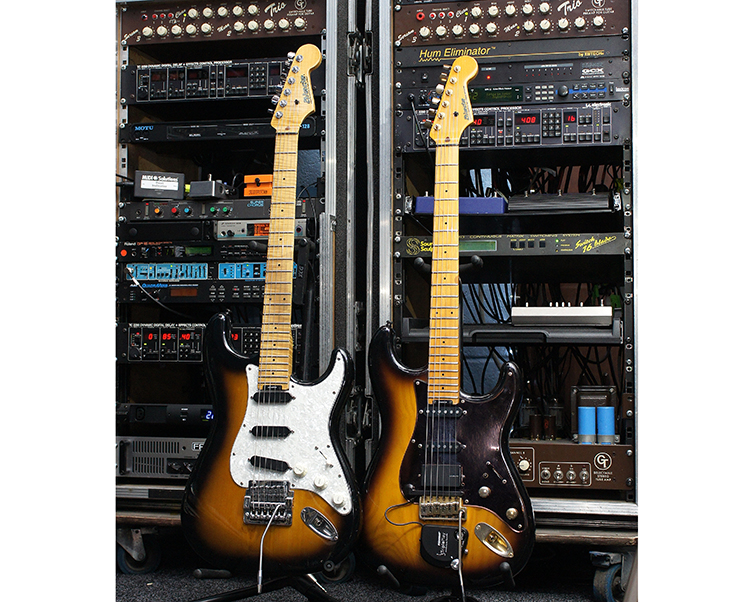
(Photo by Lars Mullen)
GG: So you’re still bringing the JC-120 out with you?
SR: Oh yeah, yeah! When we fly in, especially for solo shows, we hire them in, really.
GG: Wow, cool! I’ve listened to Marillion for a long time and I’m a big fan of your guitar sound. I think it’s particularly clear and beautiful sounding, but I would never have guessed it was a Jazz Chorus to be honest!
SR: Well that’s the thing: they can sound a bit harsh if you don’t know how to dial them in: it’s all about dialling in the sounds, you know, but I find I use the Strats in the out-of-phase positions (2 and 4 on a normal 5 way selector: Ray) but with a bit of chorus and delay, just into the JC-120 and that was pretty much my clean sound in those days, with the DS-1 for the solo sound.
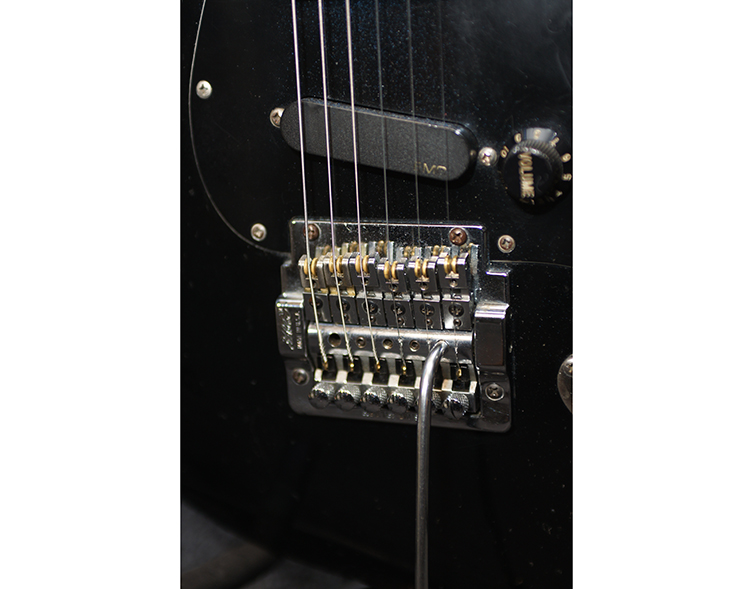
(Photo by Lars Mullen)
GG: So, for the delay sounds, are you figuring out precise milliseconds from the song’s tempo? Or do you prefer to find a sound that’s ambient that works for you?
SR: Well in the old days, I just used to just have a Roland, I think it was an SD-3000, that had 8 memories. So, basically, all the songs were written with those delays, so the tempos were based on the delays as opposed to the opposite. So, yeah, it tends to be that way really. If I’m writing something and the sound has the delay then the drummer will play for that tempo and get locked in.
Sometimes, I think, it would be nice if the delay time wasn’t quite the same as the track, just because then we could all kind of mush together a bit. But then, I’ve moved on to using a TC Electronic 2290 for the Season’s End album onwards and that had a lot more features like panning delay, modulated delay...and I’ve only just stopped using that, actually. Mine have toured around the world for 30 years now: they’re getting a bit tired! (laughs)
GG: Haha, cool, so what have you moved onto now for your delay sounds?
SR: Eh, I use the Free the Tone Flight Time, which is very much based on the 2290, like how it’s laid out. And actually, they’ve just brought out another one and I can’t remember what it’s called but it’s another delay because (the Flight Time) was missing some of the features like, as I say, the modulated delay. I’ve worked quite closely with Free the Tone on this new delay. It’s got two delay lines, one of which can be modulated. So that gets very close to the 2290 sound that I’ve used in the past.
But yeah, I’ve got so many pedals, it’s like, y’know...haha!
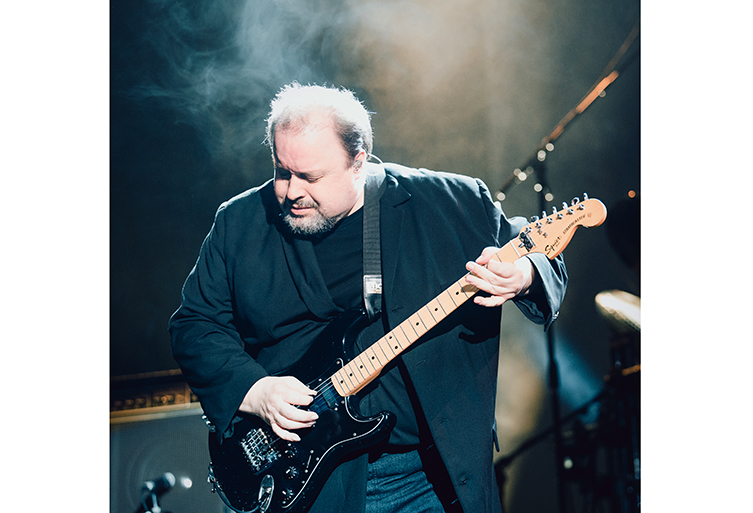
GG: Yeah, I know what you mean! But it’s like, regardless of the specific things you use, there’s always that sound that’s there! I think it’s fair to say that you’re quite well known for your lyrical, melodic playing, so I wondered: when it comes time to do an instrumental lead guitar piece, do you tend to think in terms of melodies first, or do you kind of match the key with your knowledge of scales and modes and see what comes out?
SR: Well it’s all really how the chordal structure...y’know, the opportunities, the melodic possibilities. Some simple chord structures are so easy to play on, so you just try to choose a starting note, play, and off you go! Um, sometimes it’s harder work than that: I’m not a technical musician, I pretty much play by feel but my musical knowledge is enough that I can kind of get by, though it gets a bit funky sometimes.
GG: But you don’t rely on it.
SR: Yeah, really, more than anything else, what I try and play is just what’s right for the song, you know? That might be a manic part, like the first solo on Garden (Garden Party, from Marillion's debut Script for a Jester's Tear- Ray), or something melodic, or just very simplistic and textural. For me, the song is king, you have however many bars to do something, so try and do something that’s different and that fits the mood of the song.
But the other thing I’ve instilled a lot is to play lead lines around the vocal melody, so it kinds of weaves around them. That’s quite a knack, I think, because you’re not trying to fight the vocal, you’re always trying to support it, and kind of create a counter to it.
GG: That’s quite a unique perspective to have: the headspace of a lead guitarist, but a supportive lead guitarist. Obviously, most guys who are into their solos are just waiting for their 16 bars so they can go mental, you know?
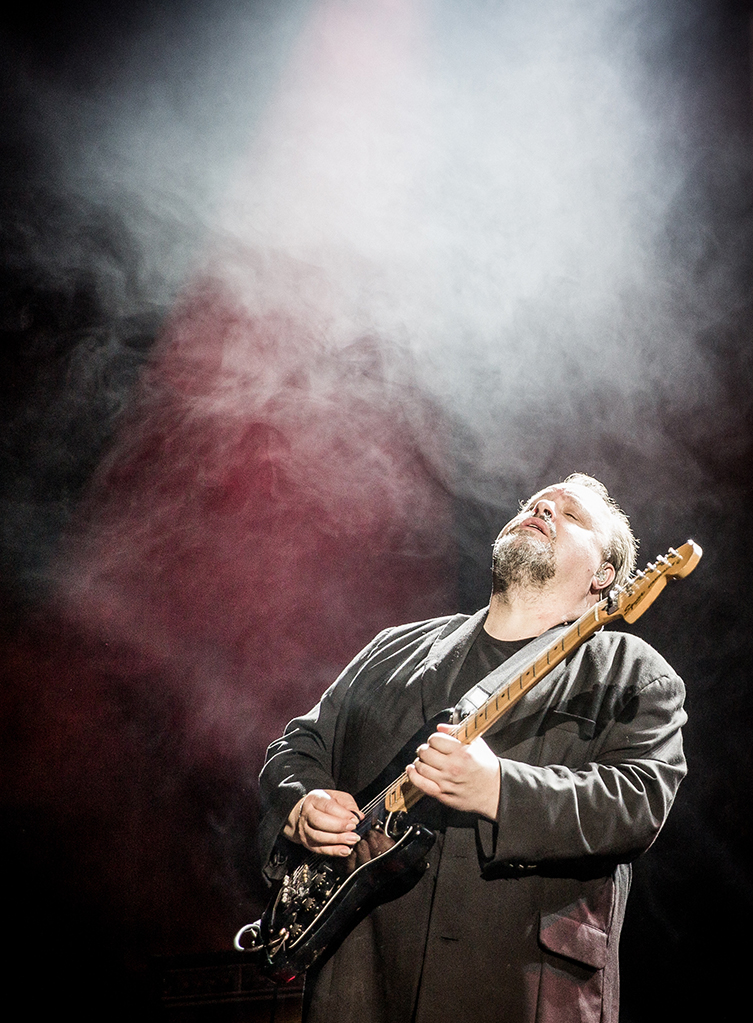
SR: Yeah, occasionally you can do that, and it can be great, but ultimately, it’s the song that people are going to remember and if your part in the song absolutely nails the emotion that you’re trying to get across...
GG: Yeah.
SR: I mean, that’s the thing, you know? You can shred all you want, or you can, you, know, go through your 201 Blues licks (laughs), you know, but, people are doing that all over the world and what you’ve got to try and do is find an individual voice, by stealing from as many people as possible and feeling what the music’s telling you, I suppose.
GG: That’s exactly what you should be doing! So, just thinking about solo parts, and bending strings etc, is it gauge 9 strings you are still on for your electric guitars?
SR: Yeah, Super Slinkys, 9-42 most of the time. A couple of the other guitars have got the next one up, 10-46.
GG: So, the 9s are still giving you enough sustain? You know how sometimes they say that heavier strings give you more sustain and so on. Are you using compressors to help with that?
SR: No, not at all! It’s all about the relationship between the body of the guitar and the speaker really: about how loud it is, how close you are, how much distortion you have. You know, with the DS-1, it’s quite a full-on distorted sound so you have to be quite careful about muting the other strings to play it as cleanly as possible.
GG: And when you’re using the DS-1, have you got it quite high up on the gain?
SR: Yeah, I have the gain fully on and the tone fully off.
GG: Ah, cool!
SR: And the volume so it’s just boosting slightly.
GG: That’s good to know! I’ve personally also had issues with the DS-1’s brightness: for some reason I’ve never thought it was ‘okay’ to have the tone knob all the way off, haha!
SR: Yeah, I think because the JC-120’s so inherently bright, by doing that, you tell it! You control that. Sometimes I might turn it up a little bit, to back it up and get more bite. One of the Analogman pedals he sent me has got a sweepable mid boost as well, which can be really handy for dialling in just where you want it.
GG: That’s so cool! You can sit there and just go through the frequencies until you find that little notch.
SR: Yeah, exactly, yeah.
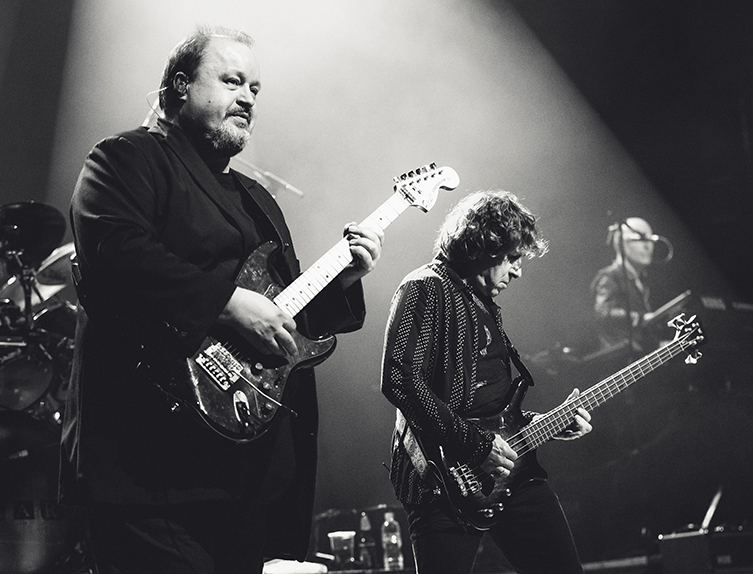
GG: Cool! Now, I’m aware that I don’t have too much more time with you, but I was going to go into the whole thing about how you guys are pioneers of crowdfunding. I don’t know that you get the credit for that, necessarily...
SR: No, we should have copyrighted the idea! (laughs) But, yeah! I’m sure somebody else would’ve had the idea eventually but yeah, we’re on Wikipedia as the acknowledged pioneers of crowdfunding. It’s something I still use. I’m in the process of writing another solo album, which I’ll use crowdfunding for.
GG; Ah, cool, good, I was going to ask about that! This’ll be the follow up to Ghosts of Pripyat, which came out...that was about five years ago now, wasn’t it?
SR: Yeah, yeah! But this is a little bit different. I’m gonna do another album in the style of ‘ghosts...’ after this one but this one is my space-themed album, kind of more...how to describe it, really, like a cross between Vangelis and Peter Gabriel and Pink Floyd, really.
GG: Wow!
SR: But very sort of textural. Um, I did some concerts in North Chile about a month or so ago, including playing at an astronomical conservatory called Paranal for the solar eclipse.
GG: Nice!
SR: So, we got this incredible footage of us playing underneath this giant radio telescope just before the solar eclipse. So anyway, I’ve got this album I’ve been working on this last couple of years called Revontulet that I’m going to launch the website for and the crowdfunding for in the next few months.
GG: That’s amazing! How much inspiration must’ve come out of an experience like that?!
SR: Oh honestly, there’s things you...we played at the Paranal Observatory that’s up at 3500 metres, I think, up above the clouds basically. They have these five huge optical telescopes, one of which sends out lasers, basically atmospheric distortion...
GG: Nice.
SR: And they compensate for it, but anyway, we were filming, Ricardo the keyboard player and myself, on a platform underneath these telescopes, and they fired the lasers just for us. If you see this photo, then it’s like...forget Pink Floyd, haha! There’s literally the Milky Way above us, shining above us, with this platform and these lasers, giant lasers. Reminds me actually, of the Death Star! (laughs)

So, yeah, it was just an incredible experience and yeah, I’ve got some amazing ideas for the album.
GG: Wow, you can’t really beat that, can you? Lasers plus nature at its best.
SR: Yeah, haha!
GG: That sounds unspeakably epic. And what was the meaning of the word Revontulet?
SR: It’s Finnish for ‘firefox’, which is like a beast-fable myth of a fox whose tail sweeps snow up into the sky and that’s what makes the Aurora Borealis.
GG: Oh, wow! That’s perfect! I love that. And, just before I sign off, it’s kind of a geek thing but I’m always interested in plectrums: what are you currently using?
SR: Erm, just a kind of 73 gauge normal one. I tend to get them made for me, with the logo and so on, signature on the back and stuff. But it’s quite variable: sometimes the plastic’s too hard and other times you’re lucky to get through two songs before you’ve carved huge chunks out of it! (laughs) So all kinds...I can’t even remember the make now, but a selection of picks. I like them generally not too thick: I like to really control the dynamics of it and if it’s too thick it’s very hard to do that. So, a 73, to maybe an eighty-whatever.
GG: Oh yeah, the .88mm.
SR: Yeah.
GG: Cool! I just find that so interesting. Some people who are real shredders use something like .60mm (Eddie Van Halen - Ray) and other guys who don’t play a lot of lead are on, like, one and a half millimetres. I always think it’s good to know, you know?
SR: It’s all about how much energy you wanna transmit. Like I say: 70 or 80, holding it quite lightly, you can be quite delicate with it, especially if you’re strumming a chord part, but then grip it tighter and...yeah.
GG: You can go for it.
SR: Yeah, go for it, if you really wanted to sort of do something that’s pushing the amp.
GG: Yeah! Exactly. Right, cool! Well, Steve, you know what: I could keep going on but I’m at 22 minutes and I don’t want to be cheeky with the time, so thank you very much for agreeing to talk to me!
SR: No problem Ray!
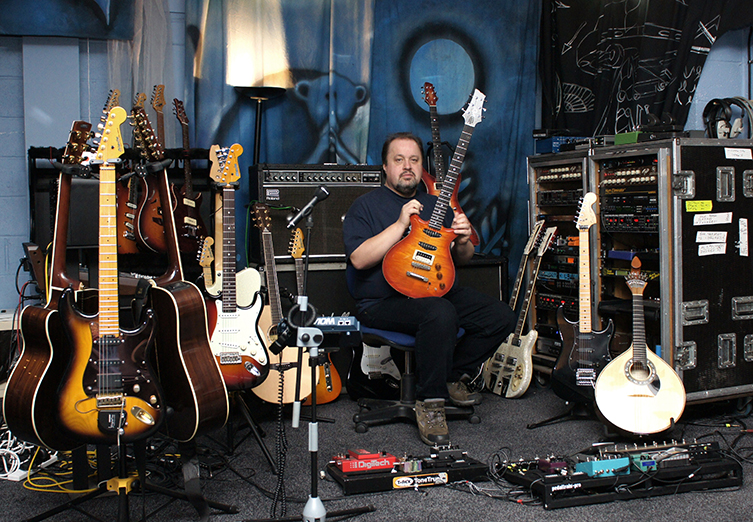
(Photo by Lars Mullen)
Those twenty-some minutes passed by in a flash! It always seems like you're just getting into the conversation and then it's time to sign off. So it goes! It was great to have the opportunity to really dissect Steve's wonderful guitar sound in such detail. I didn't even hassle him about Beowulf, to my eternal regret.
It'll be exciting to see and hear Marillion in full flight this winter when they tour the UK. Marillion With Friends From the Orchestra Live 2019 begins November 1st in Liverpool and finishes at the Royal Albert Hall on 19th November before continuing into Europe the following month. Keep up with it all on the official Marillion site.
We'd like to thank Steve for his time and generosity. We'd also like to thank Sharon Chevin for the interview opportunity and Lars Mullen for his excellent photographs.
Until next time.


